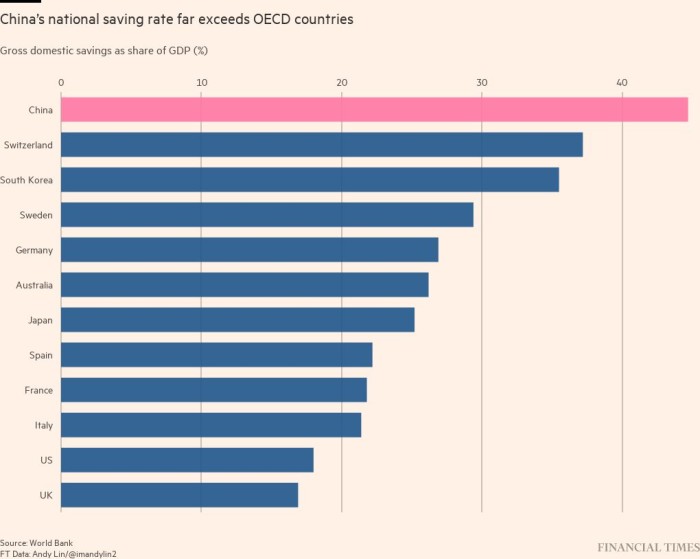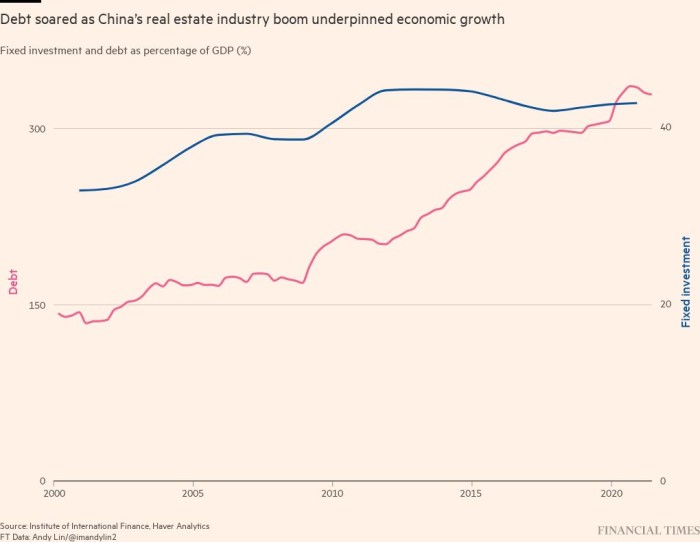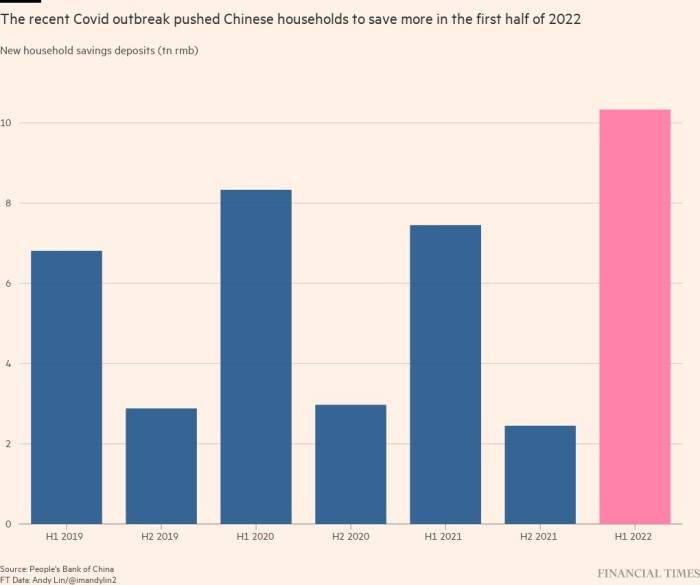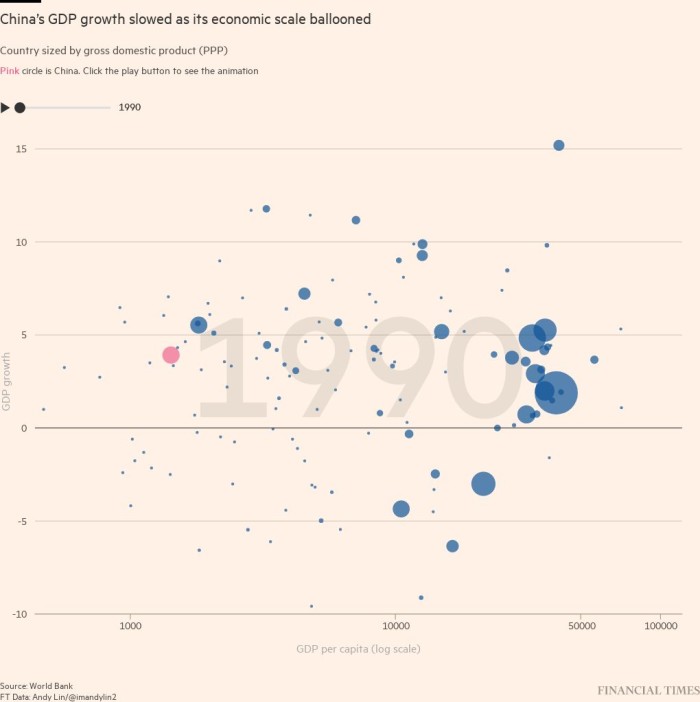This is the second part in a series about the crash in the Chinese property market
In late 2013, the Chinese Communist party under its new leader Xi Jinping unveiled a striking programme of reforms aimed at rebalancing the world’s second-biggest economy in favour of market forces and the private sector.
Under its 60-point reform plan Xi’s new administration promised to get rid of obstacles that had been holding back consumer-led growth in China — including enforcing a property tax, granting more land rights to farmers and migrant workers, and opening state-controlled sectors to private capital.
The state’s tight grip was about to ease. If implemented as planned, analysts predicted at the time, China could maintain 7 per cent annual gross domestic product growth for at least the decade to come and make the transition into the category of high-income nations.
Almost 10 years on, many of those promises remain unfulfilled. At the same time, the Chinese economy faces diminishing returns after relying for years on growth that has been propelled by a debt-fuelled real estate investment boom.
Battered by Xi’s controversial zero-Covid policy, stiffening global economic headwinds and a slumping housing market, this year is set to mark the first time since the early 1990s that China’s growth rate will fall behind the rest of the region.
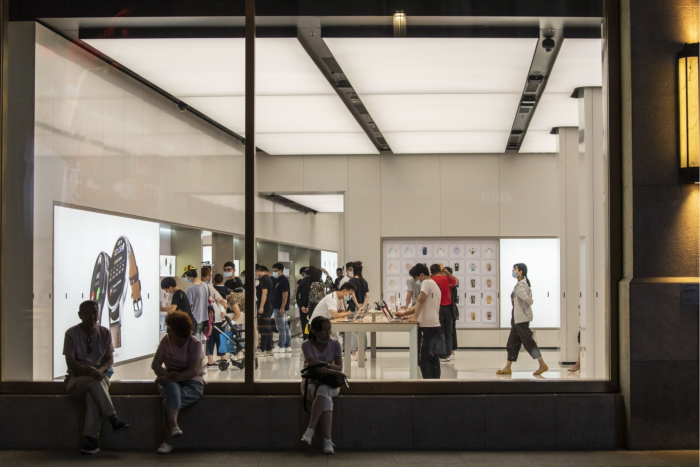
As Xi approaches an unprecedented third term in power, he and his top lieutenants have not only the immediate task of orchestrating a soft landing from turmoil roiling China’s property sector. They must also respond to a stark question: without property as China’s key driver, how can the economy keep growing?
“The 60 reforms would have largely expanded the role of consumption and private initiatives,” says Chen Zhiwu, a professor in Chinese finance and economy at the University of Hong Kong. “However, the market-oriented reform agenda has been largely sidelined . . . resulting in a larger role for the state and a shrunken role for the private sector.”
Yixiao Zhou, an expert on China’s economy at Australian National University, says Xi’s administration missed a “window of opportunity” during a period of relative economic and geopolitical stability to undertake difficult policy overhauls.
Beijing might now be forced to act as the fallout from the property meltdown hammers China’s near-term growth prospects. “You need urgency, a crisis, to do it,” she says. “I would expect to see more policy changes and reforms.”
Given the relatively modest role that consumption plays in its economy, the IMF has described China has a “global outlier”. The country’s gross domestic savings as a percentage of GDP is 44 per cent, compared with an average of 22.5 per cent among OECD members. Over the long term, much of this is believed to be precautionary savings, cash put aside for housing, education, healthcare and retirement.
China’s property crash
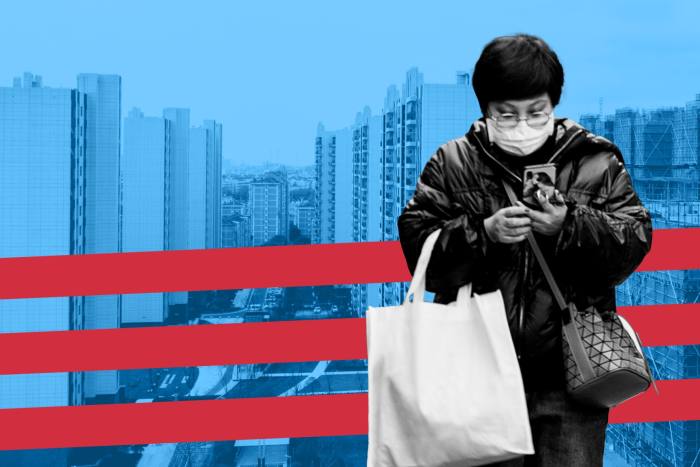
In a two-part series, the FT looks at how the slump in house prices is causing a sharp slowdown in China’s economy
Previous story: ‘a slow-motion financial crisis’
This is evidence, according to critics, that while China’s economy has been growing, it has failed to build up the sort of pension system and other forms of social safety net that would make people comfortable about spending more of their income.
Bert Hofman, a former Beijing-based country director for China at the World Bank, is convinced that suppressed consumer demand could be unlocked “relatively quickly”. This would require a series of policy changes targeted at alleviating the anxieties that drive Chinese household to save at rates far greater than most countries.
“It really is the household savings that gives you low consumption . . . China is at the level of income where other countries have built safety nets and therefore, they thrived in more domestic demand,” he says.
The IMF estimates that “if Chinese households consumed comparably to Brazilian households, their consumption levels would be more than double”.
However, many experts believe that the very reforms that could propel — and sustain — China into a new era of growth run counter to Xi’s quest for greater control and defence of the interests of the ruling CCP.
“China is a middle-income economy, it has a long way to go before it becomes a high-income economy,” says Nancy Qian, a Shanghai-born professor of economics at Northwestern University. “I don’t think China is going to become a developed economy or a rich country any time soon”.
The road not taken
As he spearheaded China’s reforms in the 1980s and 1990s and set the country on a path to prosperity, Deng Xiaoping’s decision to “let some people get rich first” appeared to change forever the contract between the Chinese Communist party and the people under its rule.
Private property markets became an important part of the new compact. With the state no longer the sole developer and landlord, construction boomed. The sweeping housing privatisation led to home ownership rates soaring from 20 per cent in the late 1980s to more than 90 per cent by 2007.
The period marked the birth of a homeowning middle class, which swelled from fewer than 3 per cent of the population in 2000 to over half the population, more than 700mn people, by 2018. Real GDP per capita grew almost ten-fold in the 30 years from 1990 while wages in the cities quintupled.
Brad Setser, a senior fellow at the Council on Foreign Relations, a foreign policy think-tank, says that China has sustained unusually high levels of investment relative to the size of its economy, both in real estate and infrastructure, for longer than many critics thought possible.
“China hasn’t made the pivot [to a consumer-led economy] because it hasn’t had to,” says Setser, a former economic policy official in the Obama and Biden administrations.
In tracing the origins of China’s “exceptionally high savings and low consumption” rate today, the IMF notes “inadequate social spending” as well as earlier changes such as the one-child policy and the “gradual dismantling of the social safety net” in the 1980s and 1990s.
The IMF also points to rapidly rising house prices — forcing people to save more to cover down payments and mortgages. Under Xi, the average price in the Chinese capital increased about 166 per cent.
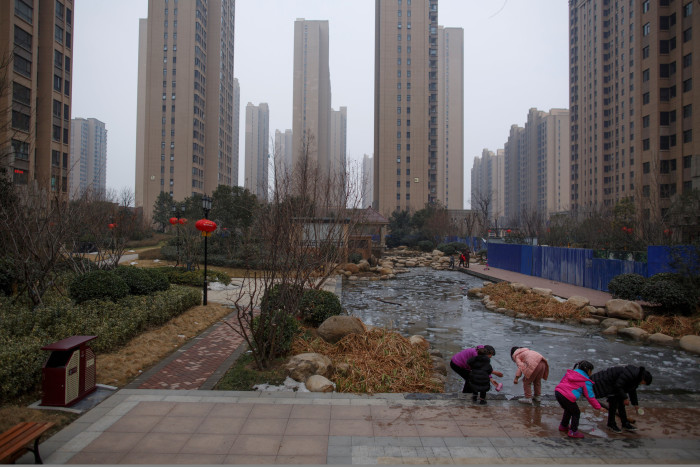
Rio Liu, a Beijing native and general manager of a domestic liquor company, is emblematic of the challenges now facing many in China’s middle class.
Six years ago, Liu’s mother required a hip replacement. When the family was informed of the upfront cost — about Rmb200,000 ($28,000)— Liu was struck by how naive he had been about the amount of money he would need to have stashed away to secure his family’s future.
“Government medical insurance only covered a small portion of the fees, and we needed to pay in advance as well,” says the 37-year-old. “In the end we went to another hospital, the whole procedure cost about Rmb50,000, insurance covered maybe Rmb15,000.”
Before the pandemic, China’s health expenditure as a percentage of GDP stood at 5.4 per cent, less than half the OECD average of 12.5 per cent and 16.7 per cent in the US. And while state pension plans now reach about 1bn people, according to China Labour Bulletin, a Hong Kong-based NGO, the benefits “are very limited” and hundreds of millions of people — mostly migrant workers and those without secure jobs — remain uncovered.
After his mother’s hip was replaced, Liu focused on building up his personal savings, aiming to maintain a float of at least Rmb250,000 in cash and liquid assets should “uncertainties” again befall him or his family. While he pays to raise an infant of his own and fund his mortgage, he still strives to increase that savings pool.
“If we can save Rmb1,000 a month then that’s better than nothing,” he says, adding: “I’m not even thinking about pension money . . . Government pensions? You can’t count on that.”
While Beijing has made moves to boost the uptake of private pensions and health insurance, Xi’s administration seems reluctant to take on the kind of structural reforms economists have called for.
Last October in an essay published in the CCP’s flagship journal Qiushi, Xi wrote that China should “improve the pension and medical care assurance systems . . . [and] gradually raise the level of basic pension”. But, he added, the “government cannot take care of everything” and warned against “falling into the trap of nurturing lazy people through ‘welfarism’”.
According to Setser, the healthiest path for China to return to a period of sustained growth would be for the consumer engine to replace, in part, the contribution once provided by real estate.
“That fundamentally means . . . giving households confidence that they can scale back their precautionary savings,” he says.
Stephen Roach, an expert on China at Yale University, says that over years of asking senior Chinese officials, including former premier Wen Jiabao, why they had not moved faster to build out a better safety net, “the answers were never satisfactory”.
Hofman says that Chinese officials have expressed concern over being “too generous” in social services provision.
“We know from the international evidence that you have to be excessively generous before you actually have labour market effects from social security — they’re so far away from that they don’t need to worry about it,” he adds.
“Programmes to boost consumption and the need to ‘enhance’ consumption are discussed in Xinhua and People’s Daily a few times every week, and during economic policy speeches they always promise to make consumption a much more important driver of growth in the future,” says Michael Pettis, a finance professor at Peking University. “But there still is a lot of confusion about how to do it.”
Unleashing the animal spirits
While the pressure on China’s growth model has been building for years, those cracks have become wider in recent months.
Desperate property developers in Henan, central China, advertised that they would accept stocks of garlic as down payments on new apartments from farmers, as a wave of rural-to-urban migrants slowed to a trickle. In cities across the country thousands of people have started protesting by refusing to make mortgage payments on unfinished apartments as developers go bust.
Souring sentiment has forced house prices into retreat — eroding the value of many families’ most important asset. Anxiety has been exacerbated by China’s relentless lockdowns and mass testing campaigns under Xi’s zero-Covid policy.
Savings rates have increased further in response. In the first half of 2022, households’ new savings deposits jumped more than a third year on year, to a record Rmb10.3tn ($1.4tn) and exceeding the Rmb9.9tn for all of 2021.
Beijing has in recent weeks ramped up policy-easing measures to support cash-strapped property developers. But some believe that while Xi’s administration has been focused on averting near-term economic shocks, it is drifting further from the policy overhauls needed to unlock fully the potential for consumer spending.
Pointing to the increasing reassertion of party-state control over large swaths of the economy under Xi’s banner of “common prosperity”, many China watchers believe that Xi risks not just capping China’s growth, but dismantling some of the economic dynamism that has lasted since Deng.
At the heart of that resignation is a belief that Xi, China’s most powerful leader since Mao Zedong, will prioritise the party above all else.
Roach, who is a former Morgan Stanley chief economist, says the sort of individualism that a stronger consumer economy requires goes against the Chinese system under Xi.
“To really unleash the ‘animal spirits’ of a consumer-led society, you must look at the characteristics of what that means in other nations: it is an aspirational mindset, upward mobility, freedom of communication, shared values that continually change and move into new areas,” he says. “To a nation focused on control, it is antithetical to them.”
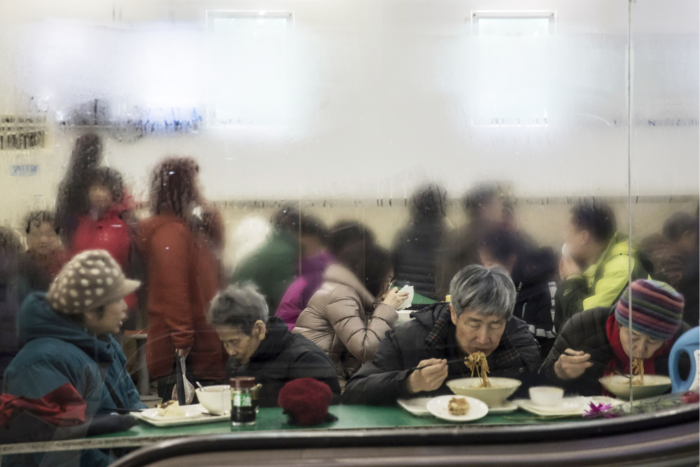
Dexter Roberts, a senior fellow with the Atlantic Council, says Xi, who has centralised authority during his decade in power, has played a critical role in “slowing down” social reforms when they threaten party control.
He points to two examples. First, promises to liberalise rules for rural land owners to freely buy and sell property. And second, reforming the hukou household registration system, a core institution that blocks China’s massive migrant population — of almost 400mn — from some key services.
“Xi Jinping believes these legacy institutions should have a key role, because he believes that the party should have a key role throughout society,” says Roberts. “Ultimately, he’s not comfortable with the idea of free migration around the country.”
However, some longstanding China observers believe the rebalancing of the economy towards a consumer-led growth has made more progress than critics allow.
Andy Rothman, an investment strategist at Matthews Asia, points out that consumption and services have been largest component of the economy in each of the past 10 years.
China, he adds, has progressively raised the threshold for income below which people don’t have to pay any tax at all, which has essentially meant close to 100mn people have dropped off the tax roll in recent years and have more money to spend. While progress on social reforms has not been sufficient to cut the household savings rate, he says, once the zero-Covid policy is scrapped households will be left “sitting on an enormous pile of cash.”
The leadership in Beijing, he says, is under no illusion that the years of consistent double-digit growth are over.
“One of the reasons they’re comfortable with that is that is the base effect: last year, even though GDP growth was half the rate it was a decade ago, the incremental expansion in the size of China’s GDP was the biggest in history.”
Lying flat
At the heart of the debate over whether China can find a new growth model is a question over the limits of creativity, dynamism and innovation under authoritarian systems.
Evidence since the second world war, says Chen of HKU, shows that “the higher the government’s control of a country’s economy, the lower the role for private consumption in its economic model”.
And there are some signs that seeds of pessimism are taking hold, especially among younger Chinese.
Late last year — months before the brutal Shanghai lockdowns — the number of applicants for China’s civil service exam, known as the guokao, increased more than a third to 2.1mn, from 1.6mn in 2020, as younger Chinese sought the relative security of government jobs. The pace of growth in new small- to medium-sized businesses in China has also started to slow.
Tina Yang is among a rising number of young Chinese starting to have doubts about her future. With a group of friends she started a small independent style design house when she was 19 and still studying fashion at a university in Guangzhou, southern China.
“Seeing your designs being mass-produced and becoming something that customers wear every day is very exciting for a fashion designer,” the 25-year-old says.
However, sales on her Taobao platform have been weaker for the past few years as growth slowed. “There were eight of us initially, five have left, four of them have gone back to their hometowns to work as civil servants . . . I’m worried that if I don’t own the business, I won’t even have a job anymore,” she says. “I think I’ve hit a time when it’s too hard for entrepreneurs.”
Roberts says unless there is a course correction and economic reforms are revived, China faces the distinct prospect of following the path of countries such as Russia, South Africa and Brazil that have struggled to achieve the status of a high-income nation.
Still, Rothman believes that the economy still retains many strengths. Consumption will boom when a post-Covid rebound takes place. And many outside China ultimately “misunderstand” Xi’s objectives.
“He is not anti-markets, anti-private sector. His focus is on making sure that as businesses and people get rich, they don’t challenge the political leadership of the party,” he says. “But he still wants them to get rich and drive the economy.”
Additional reporting by Nian Liu in Beijing, Qianer Liu in Hong Kong and Thomas Hale in Shanghai


